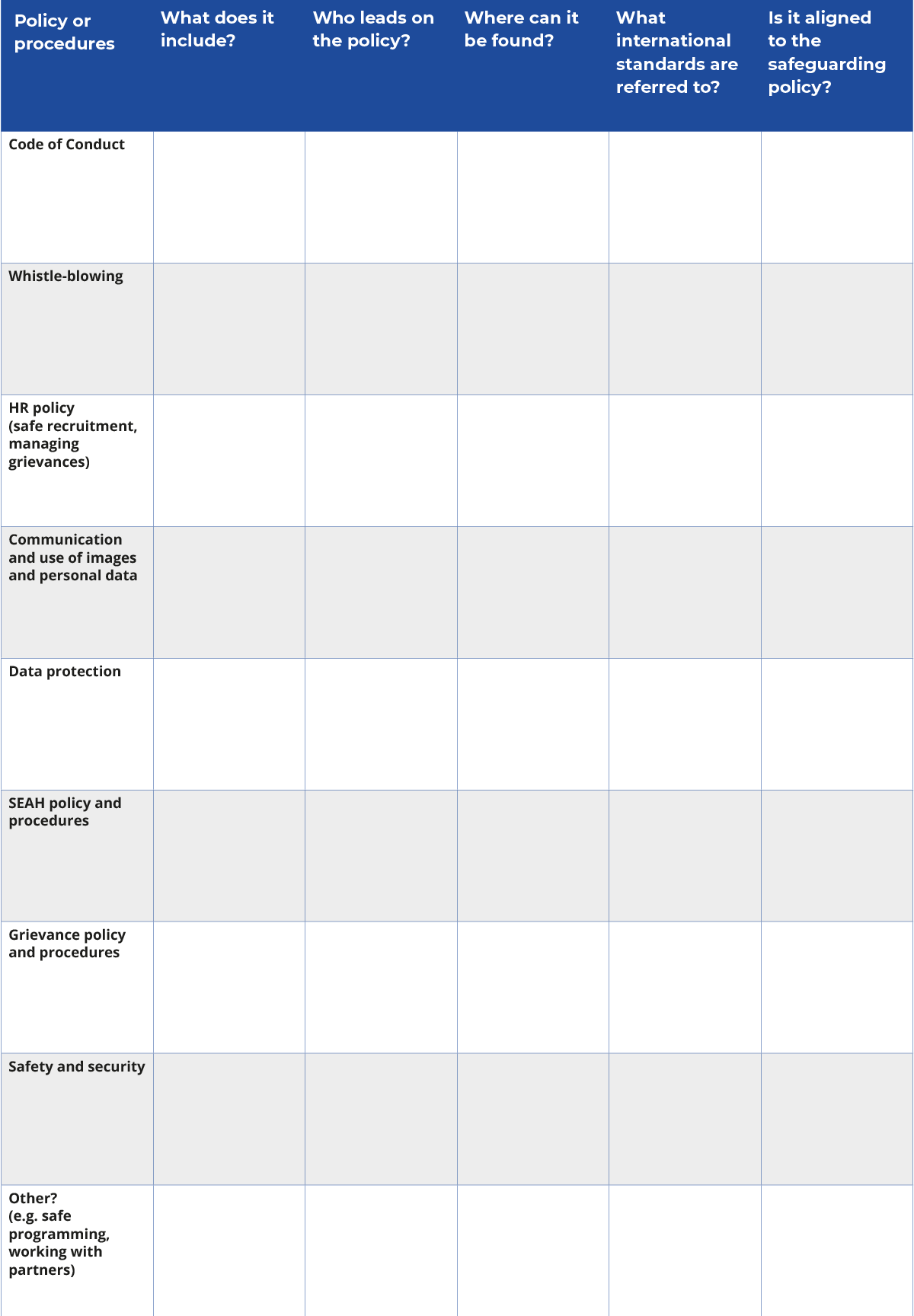Unit 6: Learning and implementation
6.5 Are your policies and procedures fit for purpose?

© ESB Professional / Shutterstock
|
How do you develop your organisation’s safeguarding policy? Reflect on your current organisational policies and procedures to ensure they are fit for purpose. |
Many organisations have made the mistake of churning out safeguarding policies and procedures that are not fit for their purpose. For example, organisations may copy and paste some other organisation’s policy and simply change the name without any regard of whether it’s relevant to their needs or context.
Using the outline below and the learning so far covered in this course, check your existing safeguarding policy for your organisation. Remember your policy should be 4–6 pages (1,200–1,800 words) to get across your organisational commitment to safeguarding as its challenging to engage with long-winded documents. Your safeguarding policy can be supplemented with procedures and annexes with templates.
Does your policy have the following?
- The organisation is clearly described.
- Definitions in brief – what is safeguarding and why is safeguarding important to the organisation?
- A statement of the organisational commitment to safeguarding, including a zero-tolerance statement on bullying, harassment and sexual exploitation and abuse, and the consequences of breaching the organisational Code of Conduct.
- Who is bound by this policy and is to be held responsible for their behaviour?
- List of national or international laws, international standards that underpin or support the policy.
- List of preventative strategies that exist or will be put in place (see your previous notes from Part 3 of this course).
- Outline of the various ways safeguarding concerns can be reported and to whom.
- Outline of how concerns will be responded to by the organisation.
- How this policy will be implemented and monitored (more about this later).
- Other policies which are connected to this safeguarding policy which exists or will be developed (see next activity).
The safeguarding policy should be supplemented by the safeguarding procedures which provides the step-by-step guidance of the ‘how’ to do something mentioned in the policy.
For example, if the policy says that the organisation will carry out safe recruitment, the safeguarding procedures will detail how that will be done (see Unit 3 for idea). It could then have standardised templates or forms and other documents in the annexes.
Top tip:
- A ‘zero tolerance’ statement means that the organisation will and must take action against any infringement of the Code of the Conduct and organisational policies and will impose the highest penalty proportionate to the breach committed.
- If your organisation has signed-up to donor commitments or other international standards such as Sphere, CHS, Accountable Now, Keeping Children Safe, include reference to these in your policy.
Further reading on developing policies can be found following the next activity.
|
Activity 6.6 Aligning policies in your organisation Complete the table below with information about the policies that exist in your organisation in relation to safeguarding. This is likely to be something you will need to discuss with others in your organisation. Here is a downloadable version of this table. Apart from a safeguarding policy, consider other relevant policies that may cover different aspects, including staff harassment and bullying, child protection, data protection, media guidelines, safe programming, working with partners etc. After completing the form try to identify:
© Adapted from “Developing a Safeguarding Policy: Process Template by Scotland’s International Development Alliance” |
![]()
Want to find out more?
If you are interested in reading more on developing your policies, follow the links below:
- Developing a Safeguarding Policy Process Template, Scotland’s International Development Alliance
- Safeguarding Policy templates, Bond UK
- CHS PSEA Index
Alignment of policies – is it a problem?
![]()
Watch the video above to understand why it is important that all policies related to safeguarding are aligned with one another.
Non-alignment of policies could result in inconsistent implementation and effectiveness.
